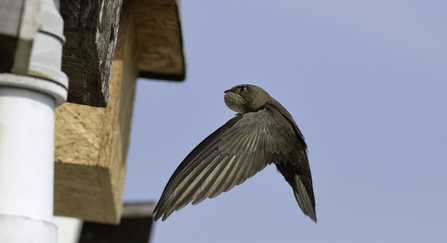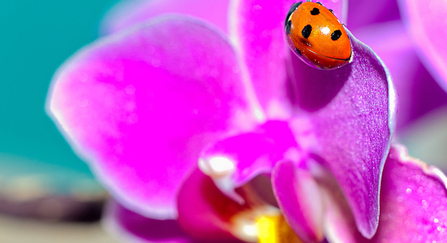OK, aphids might not sound very appetising to us, but they’re a crucial source of nutrition for a host of creatures, including spiders, ladybirds and other beetles, and lacewing and hoverfly larvae. In turn, aphids and their predators are food for some of our most familiar birds and animals, such as robins and blue tits, frogs and toads, and hedgehogs. That means that these tiny, sap-sucking insects play a vital part in the food chain.
Swifts, the arrow-shaped birds that whoosh screaming over our homes in the summer at speeds of up to 70mph, are one of the birds that depend on aphid-eating insects – and they need our help.


